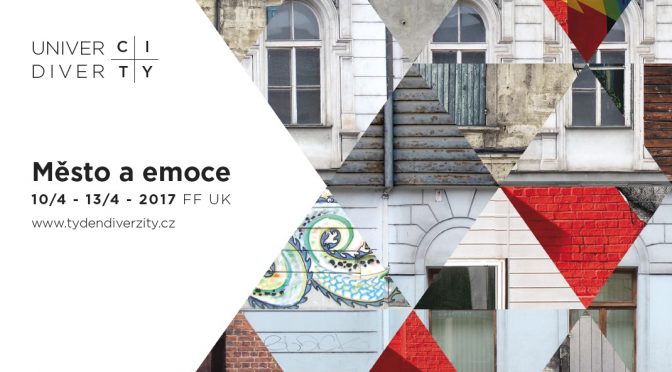Organizers: Jan Bičovský, Anna Hořejší, Eva Marková, Pavel Sitek, Kateřina Svatoňová
Language: Czech, English
Where: Hybernská 4
Check the program and details on the organizers’ website http://tydendiverzity.cz/
Within the Divesity week, the Faculty of Arts of the Charles University creates a platform for common activities of deparments, institutes and clubs of the Faculty of Arts and its partners.
The topic City and Emotions leads us to examine the life in city from various perspectives. The empty building in Hybernská 4 will provide the space to meet, share experience, exchange views and establish contacts. City and emotions in Hybernská 4—this means lectures, seminars, workshops, screenings, exhibitions, excursions, readings, concerts and many more in one single place. The event is held under the auspices of the rector of Charles University and the Mayor of Prague.
Aurore Navarro (CEFRES – FMSH) will take part in the workshop Identity strategies: heritage and diversity organised by the Institute of World History and giving a speech on:
Food Quality and Retail Trade in Prague : Heritage, Reinvention and Innovation.
Abstract
In the last decade, food retail trade has been upset by the emergence of a new demand from consumers. After a few scandals concerning agro-food products, a portion of the citizens started to pay more attention to the origin and quality of food. This last notion is not easy to define. In the case of my research, I decided not to focus on a specific food quality (organic agriculture, origin, etc), but on quality which is seen, and sold, as such by food retailers (tradesmen, food craftsmen or farmers). There is a lack of research about the multiplication of specialized shops, whose peculiarity is to be independant and to offer an alternative to large-scale distribution. The scientific literature is richer about farmers markets and shopping malls. By studying urban food retailers, we can find out how the city is making developing between heritage, reinvention and innovation. It’s also a way to approach the countryside, food production spaces and their links with city.

